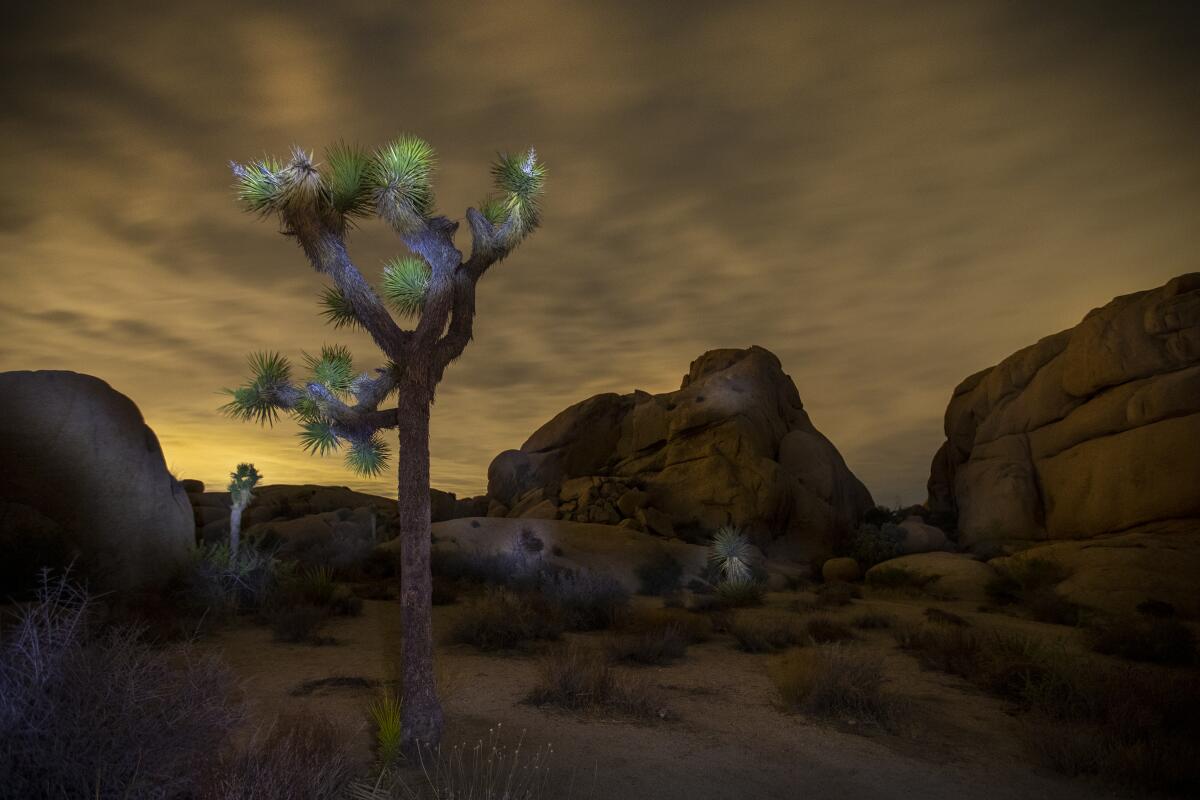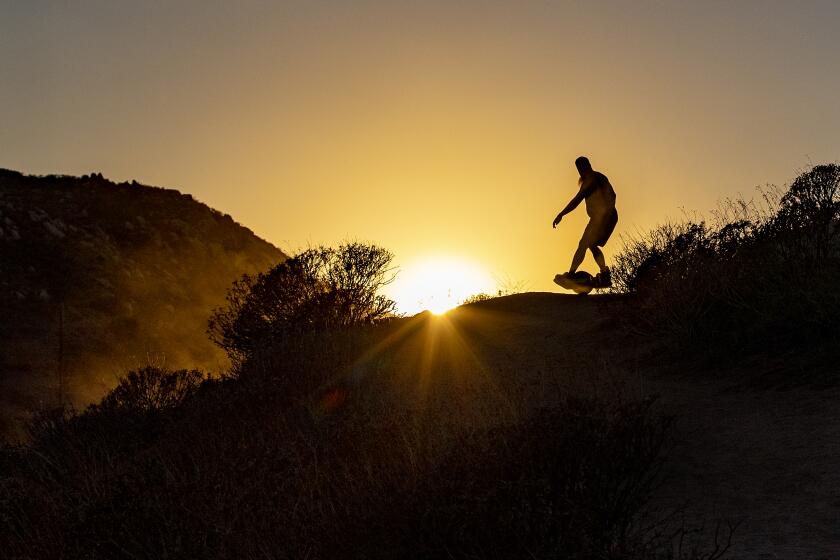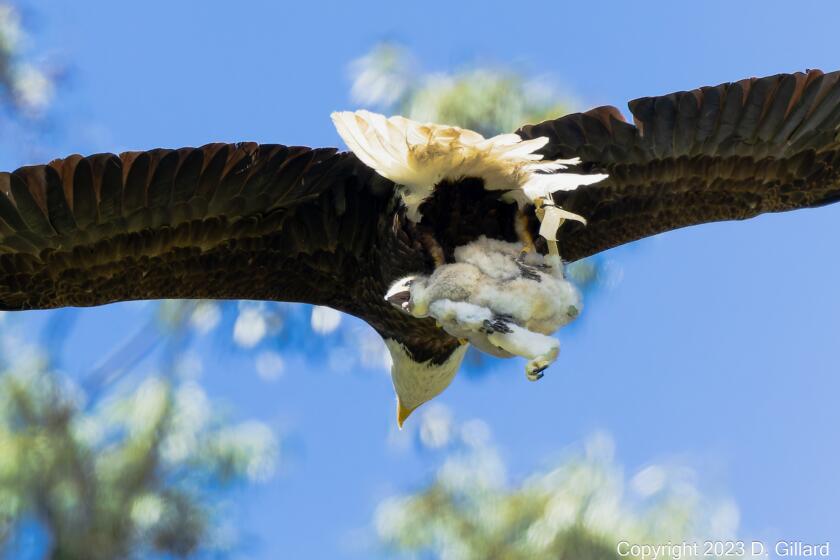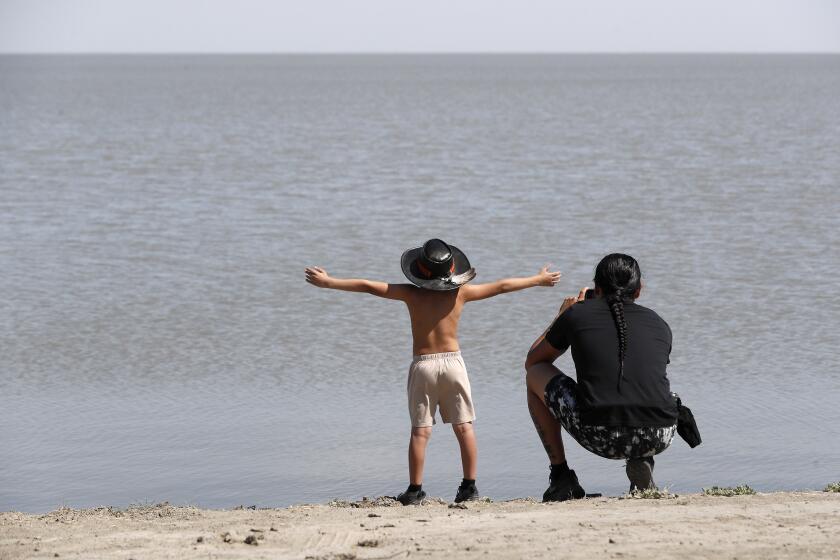New law to protect Joshua trees from climate change imposes fees on desert developers

California has enacted the Western Joshua Tree Conservation Act, the first law aimed at helping to ensure the survival of millions of the climate-threatened trees while accommodating booming renewable energy and housing projects across their ancient Mojave Desert domain.
Now, residents and business owners in sunny desert boomtowns thick with the spindly trees are struggling to understand how the legislation signed into law by Gov. Gavin Newsom on Monday will affect them.
‘Any spark from fireworks could easily start a fire in the tall grass crop that has cured and turned brown in recent weeks,’ the weather service says.
The new law, which took effect July 1, prohibits unpermitted killing or removal of the trees, tasks state wildlife authorities with developing and implementing a conservation plan for the species by 2024, and creates a fund to acquire and manage suitable habitat.
It authorizes the California Department of Fish and Wildlife to permit the taking of up to 10 trees from a housing project site and 40 trees from a public works site only if certain conditions are met.
For instance, permittees are required to mitigate losses due to construction by paying fees of up to $1,000 for each Joshua tree 16 feet or higher taken, and $2,500 for any such tree taken within two miles of Joshua Tree National Park.
For all other projects such as massive renewable energy facilities, there is no limit on take, although developers are required to demonstrate they have minimized the number of trees that would be killed and pay fees for all trees removed.
Nearly half of the tree’s range is on private land that includes the rapidly growing communities of Palmdale, Lancaster, Hesperia, Victorville and Yucca Valley, where home builders already are planning to pass the additional costs on to their clients.
The new protection was authored by the Newsom administration based on input from stakeholders including conservationists, lawmakers, tribal leaders, property owners, renewable-energy companies, labor organizations and the construction industry, officials said.
It was prompted by the California Fish and Game Commission’s inability to act on a petition filed nearly four years ago by the Center for Biological Diversity seeking to list the living symbols of the Mojave Desert as threatened under the California Endangered Species Act.
The commission a year ago deadlocked on whether to make the protection permanent.
“This bill ends the debate over whether Joshua trees should be protected,” said Brendan Cummings, the Center for Biological Diversity’s conservation director and a resident of the community of Joshua tree, “and launches us down an unprecedented path on collectively working to save this iconic and irreplaceable species in the face of climate change.
“If we do what’s necessary to save the Joshua tree,” added Cummings, author of the petition, “we will also make Southern California’s high desert and the communities within it a better, more sustainable place for all of us.”
The brutal saga of a baby hawk that was kidnapped and raised by bald eagles has riveted Bay Area birdwatchers. No one’s entirely sure what’s going on.
The commission’s stalemate reflected a politically charged reality: The western Joshua tree requires a new era of regulation and conservation in an increasingly unforgiving ecosystem.
Opponents of the petition warned that listing the trees could discourage the building of much-needed homes, stifle economic investment, hamper job creation and increase development costs in a region regarded as a last vestige of affordable housing in Southern California.
“This is not a good law and the Joshua tree is not an endangered species,” said Madelaine LaVoie, a real estate agent in the high desert city of Yucca Valley. “All it is going to do is add building costs that will be passed down to customers.”
The renewable-energy industry, while under fire for gobbling up desert land, maintains that by helping to eliminate greenhouse gas emissions, it is helping to mitigate climate change and the threat it poses to sensitive desert species such as the western Joshua tree.
“The administration has done a fine job here,” said Shannon Eddy, executive director of the Large-scale Solar Assn.
“We’re living in a time when we have to think harder about how we structure our renewable energy goals and conservation protections,” she added. “The governor’s approach gets us to that nexus between climate action and conservation.”
At stake are living symbols of the Mojave Desert, many of them dying off due to hotter, drier conditions, with fewer young trees becoming established. Conservationists fear that without special state protections, the species could lose 90% of its range, including within Joshua Tree National Park, by 2100.
Opponents including the San Bernardino County Board of Supervisors, however, preferred to leave the plant’s fate up to local jurisdictions, where many residents and policymakers believe the species scientists know as Yucca brevifolia is already protected in many city and county native plant ordinances, and within 800,000-acre Joshua Tree National Park.
They also point out that state wildlife biologists a year ago recommended against listing the species after concluding that claims in the petition about the effects of climate change on the large yuccas were premature.
They questioned the reliability of computer models suggesting the species is in decline throughout its range. That’s because, they said, while there has been a decline in the western Joshua tree population in certain portions of its historic range, in other areas the species is abundant.
The Tachi Yokut Tribe is celebrating the return of California’s Tulare Lake, saying water should remain to heal an ecosystem that was drained for agriculture.
Earlier this week, Assemblyman Tom Lackey (R-Twentynine Palms) urged lawmakers on the floor to vote against the bill he described as “wholly unnecessary given data illustrates that this species is not at risk for the next hundred years.”
Critics fear that the law imposes costs that eventually will make clusters of high desert communities in areas such as Morongo Valley affordable only to the most well-to-do transplants from urban areas.
Whether that will impede growth, however, remains to be seen. “This region is exploding with urbanites wanting to get out of the rat race,” said Chris Ligman, a building contractor in the city of Yucca Valley, about 120 miles northeast of Los Angeles. “Home builders are loving it.”
Joshua trees, which grow in the Mojave Desert and nowhere else, have become mainstays for movies, fashion shoots, advertising campaigns and wedding ceremonies.
They were named for the biblical figure Joshua by members of a band of Mormons traveling through the Cajon Pass back to Utah in 1857. They imagined the trees as shaggy prophets, their outstretched limbs pointing the way to their promised land.
The western Joshua tree is one of two genetically distinct species that occur in California. It has a boomerang-shaped range that extends westward from Joshua Tree National Park to the northern slopes of the San Bernardino and San Gabriel mountains, then northward along the eastern flanks of the Sierra Nevada and then eastward to the edges of Death Valley National Park.
The eastern Joshua tree’s range in California is centered in the Mojave National Preserve and eastward into Nevada. As many as 1 million eastern Joshua trees were incinerated by the 2020 Dome fire in the preserve.
The fate of the western species, which reaches about 40 feet in height and lives about 200 years, is most in doubt.
The tree’s blossoms, roots, inner chambers and angular boughs sustain a great abundance and diversity of desert life: yucca moths, bobcats, desert night lizards, kangaroo rats and 20 species of birds, including Scott’s orioles, ladder-backed woodpeckers and great horned owls.
But drought, extreme heat, brush fires and development sprawl are taking a heavy toll on the trees and the species they support. Some stands have not produced baby Joshua trees in decades.
“While the western Joshua tree is the first species protected in California due to climate change,” Cummings said, “unfortunately, it may not be the last one.”
More to Read
Sign up for Essential California
The most important California stories and recommendations in your inbox every morning.
You may occasionally receive promotional content from the Los Angeles Times.














